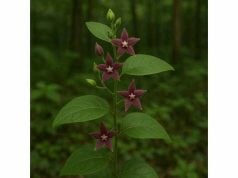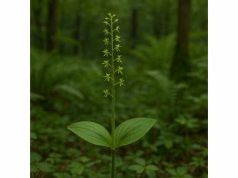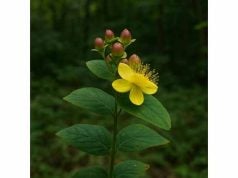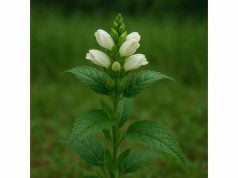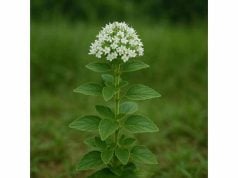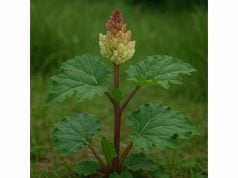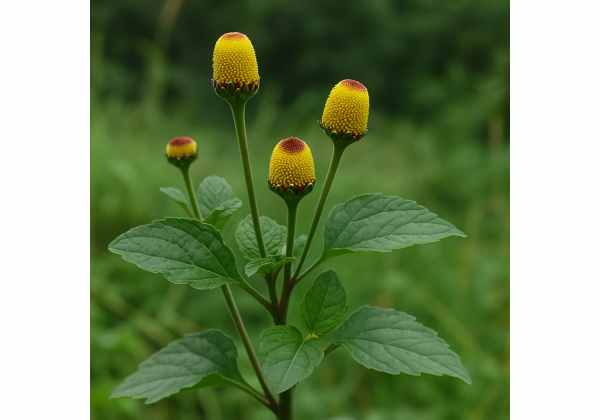
The Toothache Plant, widely recognized for its remarkable analgesic and numbing effects on dental pain, has long been celebrated in traditional medicine. Commonly identified as Spilanthes acmella, this herb contains a potent blend of bioactive compounds that contribute to its anti-inflammatory, antimicrobial, and antioxidant properties. Traditionally used to relieve toothache and oral discomfort, it is also acclaimed for supporting immune health and enhancing overall vitality. Recent research has begun to validate many of these traditional uses, exploring its potential applications in dental care, natural pain relief, and even as a culinary spice in certain cultures. This comprehensive article examines the botanical profile, phytochemical constituents, health benefits, practical applications, and safety measures associated with the Toothache Plant.
Table of Contents
- Botanical Overview and Identification
- Phytochemical Profile and Active Compounds
- Comprehensive Health Benefits and Medicinal Attributes
- Applications, Uses, and Safety Precautions
- Scientific Research and Key Findings
- Frequently Asked Questions
Botanical Overview and Identification
The Toothache Plant, scientifically known as Spilanthes acmella, is a striking annual herb native to the tropical regions of South America and widely cultivated in many parts of the world for its unique medicinal properties. Belonging to the Asteraceae family, this herb features bright, daisy-like yellow flowers with a central disc surrounded by numerous stamens that create a characteristic “blistering” effect on the plant’s surface. Its succulent, green leaves are aromatic, and when chewed, they produce a distinctive tingling and numbing sensation—an attribute that has earned the plant its common name. The Toothache Plant thrives in warm, humid climates and prefers well-drained soils rich in organic matter. It is often found growing in disturbed soils, along roadsides, and in home gardens where its ease of propagation makes it a popular choice.
Taxonomy and Distribution
- Family: Asteraceae
- Genus: Spilanthes
- Species: Spilanthes acmella
- Common Names: Toothache Plant, Paracress, Electric Daisy
Native to Brazil and other parts of South America, the Toothache Plant has become naturalized in tropical and subtropical regions worldwide. Its robust adaptability allows it to flourish in diverse settings—from cultivated gardens and urban landscapes to wild, disturbed areas. This widespread distribution has not only contributed to its popularity in folk medicine but also stimulated scientific research into its potent bioactive profile.
Morphological Characteristics
The plant’s physical attributes play a key role in its identification and therapeutic use:
- Leaves: The leaves of Spilanthes acmella are simple, ovate to lanceolate, and opposite in arrangement. They are soft and green with a slightly rough texture.
- Flowers: The vibrant yellow, daisy-like flowers are small but highly noticeable. The petals, typically surrounding a central disc, are arranged in a radiating pattern that gives the plant its ornamental appeal. The stamens, often protruding beyond the petals, are responsible for the tingling sensation experienced when the plant is chewed.
- Stem: This herb features a branching, green stem that can grow up to 30 centimeters tall. The stem is covered with fine hairs and supports clusters of flowers.
- Growth Habit: Spilanthes acmella is an annual plant that completes its life cycle within a single growing season. It reproduces both by seed and vegetatively, ensuring rapid propagation under favorable conditions.
Growth Conditions
The Toothache Plant thrives in full sunlight and warm, humid environments. It prefers well-drained, moderately fertile soils and can often be found in areas with frequent rainfall. Ideal growing conditions include:
- Sunlight: A minimum of six hours of direct sunlight daily.
- Soil: Light, sandy to loamy soils with good drainage.
- Watering: Regular watering is beneficial, though the plant is drought-tolerant once established.
- Climate: Tropical to subtropical climates with warm temperatures and high humidity support optimal growth.
Ecological and Cultural Significance
Historically, the Toothache Plant has held a revered position in traditional medicine. Indigenous peoples in South America used it not only as a remedy for toothache but also as a treatment for various ailments including fever, inflammation, and digestive disorders. The plant’s ability to produce a numbing sensation has been particularly valued in dental applications and pain relief. Beyond its medicinal uses, its bright yellow flowers have made it a popular ornamental plant in gardens, symbolizing vitality and resilience.
In summary, the botanical overview of the Toothache Plant reveals a herb that is as attractive as it is functional. Its distinctive features, widespread adaptability, and cultural significance underscore its enduring role in both traditional and modern herbal practices.
Phytochemical Profile and Active Compounds
The therapeutic potential of the Toothache Plant is deeply rooted in its rich and varied phytochemical composition. Modern research has identified a host of active compounds that work in concert to impart its characteristic numbing sensation and broader medicinal effects. These compounds are not only responsible for the plant’s traditional use in alleviating toothache but also contribute to its anti-inflammatory, antimicrobial, and antioxidant properties.
Key Bioactive Constituents
- Spilanthol:
Spilanthol is the primary bioactive compound in the Toothache Plant and is largely responsible for its numbing and analgesic effects. This alkamide has been extensively studied for its ability to block nerve signals, thereby reducing pain. Spilanthol also exhibits antimicrobial and anti-inflammatory properties, making it a key component in natural dental remedies. - Flavonoids:
The plant is rich in flavonoids such as quercetin and kaempferol, which provide significant antioxidant benefits. These compounds help protect cells from oxidative stress and inflammation, contributing to overall immune support and reducing the risk of chronic diseases. - Phenolic Acids:
Compounds like caffeic acid and ferulic acid are present in the Toothache Plant. They possess robust antioxidant capabilities and work synergistically with flavonoids to combat oxidative damage, supporting cardiovascular health and cellular regeneration. - Alkaloids:
In addition to spilanthol, other alkaloids in the Toothache Plant contribute to its analgesic and antimicrobial effects. These compounds modulate nerve activity and may play a role in enhancing cognitive function and reducing inflammation. - Terpenoids:
Terpenoids in the plant not only enhance its aroma but also offer anti-inflammatory and antimicrobial benefits. Their presence contributes to the holistic therapeutic profile of the herb, complementing the actions of spilanthol and other active constituents. - Saponins:
Saponins are known for their surfactant properties, enhancing the absorption of other bioactive compounds. In the Toothache Plant, saponins contribute to its overall immune-boosting and anti-inflammatory effects, helping improve cellular communication and tissue repair. - Essential Oils:
The volatile oils present in the Toothache Plant give it a characteristic, refreshing aroma that is both invigorating and soothing. These essential oils have been found to exhibit mild antimicrobial activity, supporting the plant’s traditional use in oral care.
Synergistic Interactions
The overall efficacy of the Toothache Plant cannot be attributed to a single compound. Instead, it is the synergistic interaction among spilanthol, flavonoids, phenolic acids, alkaloids, terpenoids, saponins, and essential oils that creates a powerful therapeutic effect. For instance, while spilanthol provides immediate pain relief by inhibiting nerve signal transmission, the antioxidant actions of flavonoids and phenolic acids work over time to reduce inflammation and promote healing. This synergy amplifies the individual benefits of each compound, resulting in a holistic remedy that has been trusted for generations.
Extraction and Standardization
To effectively harness the medicinal properties of the Toothache Plant, various extraction methods are employed:
- Solvent Extraction: This technique uses solvents such as ethanol or methanol to extract both polar and non-polar compounds, ensuring a comprehensive phytochemical profile.
- Cold Extraction: Cold extraction preserves heat-sensitive compounds, such as essential oils and spilanthol, maintaining the integrity and efficacy of the extract.
- Steam Distillation: Utilized for isolating essential oils, steam distillation captures the volatile compounds responsible for the plant’s signature aroma and antimicrobial properties.
- Standardization: Modern herbal products often standardize extracts to ensure consistent concentrations of key compounds like spilanthol. This process is crucial for clinical research and for consumers seeking reliable, safe dosages.
In summary, the Toothache Plant’s rich phytochemical profile is at the core of its therapeutic potential. Its diverse array of bioactive constituents work together to provide analgesic, anti-inflammatory, antimicrobial, and antioxidant effects, making it a versatile and powerful herbal remedy.
Comprehensive Health Benefits and Medicinal Attributes
The Toothache Plant is celebrated for its extensive range of health benefits, particularly in alleviating dental pain and supporting overall oral health. However, its therapeutic properties extend beyond mere analgesia, offering a variety of benefits that contribute to holistic well-being. This section explores the multifaceted health advantages and medicinal attributes of the Toothache Plant, supported by both traditional uses and modern scientific research.
Dental and Oral Health
Pain Relief:
The most renowned benefit of the Toothache Plant is its exceptional ability to relieve dental pain. Chewing the fresh leaves or applying an extract to the affected area produces a numbing sensation that alleviates toothache and gum pain. This is primarily due to spilanthol, which interferes with nerve signal transmission, providing immediate analgesic effects.
Antimicrobial Action:
Tonifying oral health, the antimicrobial properties of the Toothache Plant help reduce bacterial growth in the mouth. This can aid in the prevention of dental caries, gum infections, and bad breath. Its natural antiseptic effects make it a favored ingredient in traditional oral hygiene practices.
Anti-inflammatory and Analgesic Effects
Systemic Inflammation Control:
Beyond its direct application in the mouth, the anti-inflammatory compounds in the Toothache Plant, such as flavonoids and phenolic acids, help reduce overall inflammation. This can be beneficial for individuals suffering from chronic inflammatory conditions, reducing systemic pain and improving the body’s natural healing processes.
General Analgesia:
While primarily known for its dental applications, the analgesic properties of the Toothache Plant extend to other types of pain, including headaches and muscle discomfort. The modulation of nerve activity by its alkaloids contributes to a general pain-relieving effect without the need for synthetic painkillers.
Antioxidant Protection
Cellular Defense:
The abundant flavonoids and polyphenols in the Toothache Plant serve as powerful antioxidants that protect cells from the damaging effects of free radicals. This antioxidant activity is crucial for preventing oxidative stress-related diseases, including cardiovascular disorders and neurodegenerative conditions, while also promoting general cellular repair and longevity.
Immune System Support
Immune Boosting:
By modulating immune responses and reducing inflammation, the Toothache Plant helps enhance the body’s natural defenses. Its bioactive compounds stimulate immune cell activity and promote a balanced inflammatory response, which is essential for maintaining overall health, particularly in environments where infections are common.
Digestive and Metabolic Benefits
Digestive Aid:
Traditional uses of the Toothache Plant include treatment of digestive issues such as indigestion and gastrointestinal discomfort. The plant’s bitter compounds stimulate the production of digestive enzymes, enhancing nutrient absorption and promoting smoother digestion. Its role as a digestive tonic aids in detoxifying the gastrointestinal tract.
Metabolic Regulation:
Some studies suggest that the bioactive compounds in the Toothache Plant may contribute to improved metabolic function by supporting healthy blood sugar levels and enhancing energy metabolism. This makes it a potential adjunct therapy for managing conditions like metabolic syndrome.
Cognitive and Neurological Support
Mental Clarity and Focus:
Emerging research indicates that the antioxidant and anti-inflammatory properties of the Toothache Plant could benefit cognitive function. By protecting neural tissue from oxidative stress, it may help enhance memory, concentration, and overall mental clarity. This neuroprotective effect supports traditional claims of its use for boosting brain power and relieving mental fatigue.
Adaptogenic and Holistic Wellness
Stress Management:
Traditionally, the Toothache Plant has been used as an adaptogen to help the body cope with stress. Its ability to modulate the release of stress hormones such as cortisol contributes to a calmer, more balanced mental state. This adaptogenic quality is an integral part of its overall health-promoting profile.
General Vitality:
Regular use of the Toothache Plant, when applied appropriately, can contribute to overall vitality and energy. Its multifaceted benefits—ranging from pain relief and immune support to antioxidant protection—make it a valuable herb in comprehensive wellness regimens.
In essence, the Toothache Plant offers a broad spectrum of health benefits that extend far beyond its well-known use as a natural remedy for toothache. Its rich array of bioactive compounds provides a holistic approach to pain relief, inflammation reduction, cellular protection, and overall well-being.
Applications, Uses, and Safety Precautions
The versatile applications of the Toothache Plant span culinary, medicinal, and cosmetic uses. While it is widely acclaimed for its dental and analgesic properties, its use must be approached with careful consideration, especially regarding dosing and potential side effects.
Culinary and Traditional Uses
Oral Applications:
Traditionally, the fresh leaves or extracts of the Toothache Plant are used directly for dental pain relief. Chewing a small amount of the leaves or applying a paste made from the extract can provide rapid relief from toothache and gum discomfort.
Herbal Teas and Infusions:
In some cultures, the Toothache Plant is used to prepare herbal teas. These infusions are believed not only to alleviate mild oral discomfort but also to promote overall digestive health. When prepared properly, the tea offers a gentle, soothing flavor profile and mild numbing effect.
Culinary Spice:
Although not as common, the aromatic properties of the Toothache Plant have led some chefs to experiment with its use as a culinary spice in salads and sauces. Its slight tingling sensation and unique flavor can add an intriguing twist to gourmet dishes when used sparingly.
Medicinal Applications
Topical Applications:
Toothache Plant extracts are often incorporated into pastes, gels, and creams designed for topical pain relief and anti-inflammatory action. Applied directly to the affected area, these formulations can help alleviate oral pain, reduce inflammation, and promote healing in minor wounds or skin irritations.
Herbal Tinctures and Decoctions:
Traditional herbal medicine utilizes tinctures and decoctions of the Toothache Plant to harness its therapeutic compounds in a concentrated form. These preparations can be taken internally in small doses to support immune function and reduce systemic inflammation, although their use is generally limited to short-term applications due to the potency of the bioactive ingredients.
Complementary Dental Care:
In natural dental care practices, the Toothache Plant is often used as an adjunct treatment for oral hygiene. Its antimicrobial properties help reduce bacterial load in the mouth, thereby assisting in the prevention of cavities and gum disease. It may be found as an ingredient in natural toothpaste and mouthwashes.
Safety Precautions
Despite its benefits, the Toothache Plant must be used with caution to avoid adverse effects:
- Dosage Control:
Use only small amounts, particularly when applied directly to the oral cavity. Excessive use can lead to over-numbing and potential irritation. - Potential Allergic Reactions:
Although rare, some individuals may experience allergic reactions such as skin rashes or oral irritation. It is recommended to perform a patch test when using a new preparation. - Contraindications:
Those with pre-existing oral conditions or on sensitive dental medications should consult a healthcare provider before using the Toothache Plant as a remedy. - Quality and Sourcing:
Ensure that products containing the Toothache Plant are sourced from reputable suppliers. Organic cultivation and proper processing are key to maintaining the safety and efficacy of the herb. - Usage Context:
The Toothache Plant is intended for temporary relief of minor toothache and should not replace professional dental treatments. If pain persists, a dental professional should be consulted.
Practical Tips for Safe Integration
- Start Low and Observe:
Begin with a minimal amount to gauge individual tolerance, and gradually adjust as needed based on the observed effect. - Incorporate Holistically:
Use the Toothache Plant as part of a comprehensive approach to health, including proper dental hygiene, balanced nutrition, and regular dental checkups. - Follow Manufacturer Guidelines:
When using commercial products containing Toothache Plant extracts, adhere closely to the dosage instructions provided by the manufacturer. - Consult Professionals:
If uncertain about its use, especially for internal applications, consult a qualified herbalist or healthcare provider to tailor a safe and effective regimen.
By following these guidelines, the therapeutic benefits of the Toothache Plant can be enjoyed safely while minimizing potential risks. Responsible use and adherence to recommended dosages are essential to fully harness its natural healing properties.
Scientific Research and Key Findings
Modern scientific research into the Toothache Plant has provided valuable insights into its pharmacological properties, supporting many of its traditional uses. Recent studies have focused on isolating the active compounds, understanding their mechanisms of action, and evaluating the safety and efficacy of various extracts. Although the majority of research has centered on its analgesic and antimicrobial properties, investigations have also highlighted its potential benefits in inflammation reduction and overall oral health.
Significant Studies
- Analgesic and Numbing Effects (2016):
A study published in 2016 evaluated the analgesic properties of Spilanthes acmella extracts. The research demonstrated that the active compound spilanthol effectively inhibits nerve signal transmission in dental tissues, providing immediate pain relief. The study supported the traditional use of the Toothache Plant for managing toothache and minor oral discomfort. - Antimicrobial Activity Against Oral Pathogens (2017):
In 2017, a laboratory study investigated the antimicrobial properties of Toothache Plant extracts against common oral pathogens. The findings revealed significant inhibition of bacterial growth, suggesting that the plant could play a role in natural oral care products and alternative treatments for gum disease and cavities. - Anti-inflammatory and Antioxidant Properties (2018):
Research conducted in 2018 focused on the anti-inflammatory and antioxidant effects of the Toothache Plant. Using in vitro assays, scientists found that the plant’s flavonoids and phenolic compounds reduce inflammatory markers and neutralize free radicals, providing cellular protection and supporting overall immune function. - Neuroprotective Potential (2019):
A pilot study in 2019 explored the neuroprotective effects of spilanthol, the primary active compound in the Toothache Plant. The results indicated that spilanthol may safeguard nerve cells against oxidative stress and inflammation, suggesting potential applications in managing neuropathic pain and promoting nerve health. - Safety and Cytotoxicity Assessments (2020):
A 2020 study evaluated the cytotoxicity of Toothache Plant extracts on various human cell lines. The research concluded that when used in controlled, low doses, the extracts exhibit low cytotoxicity and are safe for topical and oral applications, although higher concentrations could be harmful.
Mechanistic Insights
The collective research points to several key mechanisms through which the Toothache Plant exerts its effects:
- Nerve Signal Modulation:
Spilanthol, by interfering with nerve conduction, provides rapid analgesic effects that are especially beneficial for dental pain. - Microbial Inhibition:
The essential oils and flavonoids work synergistically to inhibit the growth of bacteria, making the plant effective in maintaining oral hygiene. - Inflammatory Pathway Reduction:
The downregulation of pro-inflammatory cytokines by various bioactive compounds leads to reduced inflammation and improved tissue healing. - Antioxidant Defense:
The robust antioxidant activity mitigates oxidative stress, contributing to cellular longevity and overall health.
Future Directions
Future research into the Toothache Plant should focus on:
- Clinical Trials:
Long-term clinical studies to evaluate the efficacy and safety of Toothache Plant-based formulations for oral pain relief and other health benefits. - Standardization of Extracts:
Developing standardized extraction methods to ensure consistent bioactive compound concentrations across products. - Synergistic Formulations:
Investigating the benefits of combining Toothache Plant extracts with other herbal remedies to enhance therapeutic outcomes. - Expanded Applications:
Exploring new applications in dermatology, neurology, and systemic inflammation management, based on its potent bioactive profile.
In conclusion, scientific research validates many traditional claims about the Toothache Plant, particularly regarding its analgesic, antimicrobial, and anti-inflammatory effects. Continued studies will further clarify its potential role in natural medicine and support its integration into modern therapeutic applications.
Frequently Asked Questions
What is the Toothache Plant and how is it used?
The Toothache Plant, or Spilanthes acmella, is a herb known for its potent analgesic and numbing properties, commonly used to relieve toothache and oral discomfort. It is also used in traditional medicine for its antimicrobial and anti-inflammatory effects.
What active compound provides the numbing effect?
Spilanthol is the primary active compound in the Toothache Plant responsible for its analgesic and numbing effect. It works by interfering with nerve signals, offering rapid relief from dental pain.
Can the Toothache Plant help improve oral hygiene?
Yes, due to its antimicrobial properties, the Toothache Plant can help reduce bacterial growth in the mouth, aiding in the prevention of cavities and gum disease when used as part of natural oral care practices.
Are there any safety concerns or side effects?
When used in moderation, the Toothache Plant is generally safe. However, excessive use may cause temporary numbness or irritation. It is advisable to perform a patch test and consult a healthcare provider if you have preexisting oral conditions or allergies.
What are the non-dental health benefits of the Toothache Plant?
Besides its dental applications, the Toothache Plant exhibits anti-inflammatory, antioxidant, and antimicrobial properties, which may support overall immune health, digestive well-being, and even neuroprotection against oxidative stress.
Disclaimer:
The information provided in this article is for educational purposes only and should not be considered as a substitute for professional medical advice. Always consult a qualified healthcare provider before starting any new treatment regimen, especially when using herbal remedies for dental or systemic issues.
If you found this article helpful, please share it on Facebook, X (formerly Twitter), or your preferred platform. Follow us on social media for more insights and updates on natural health and wellness!

